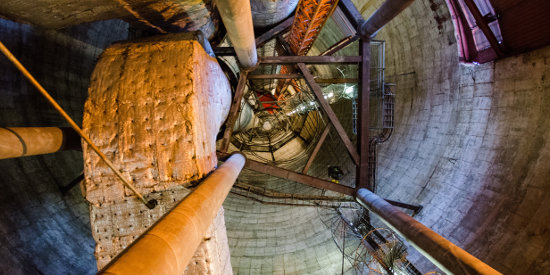
The Eesti Energia Iru power plant, just outside Tallinn, can generate up to 310 000 MWh of heat and 134 000 MWh of electricity each year by burning municipal waste. The plant can take up to 250,000 tonnes of waste per year, leaving very little to be dumped anymore.
Werro Wool, in southern Estonia, makes high-performing, allergen-free cellulose wool for thermal insulation, using up to 85% waste paper. The insulation itself is recyclable, too – it can be removed from the walls of one house and reused in another.
Both Eesti Energia Iru and Werro Wool are Estonian pioneers in the “circular economy”, an approach that aims to “close the loop” of product life-cycles by recycling and reusing materials, minimizing waste. The idea is that implementation of circular business models benefit both the economy and the environment.
The European Union has strongly embraced the circular economy concept. One way in which it has promoted it is through the EU Eco-Management and Audit Scheme (EMAS), an environmental management and audit scheme designed to assess the environmental performance of businesses and organizations and report on the results, thus encouraging further improvements.
“EMAS provides a framework for businesses and organizations to become more resource-efficient and environmentally friendly,” said Harri Moora, a programme manager at SEI. “It is an essential precondition for achieving a competitive advantage in today’s fast-changing business world.”
More than 4,500 entities across Europe have registered with EMAS, but there are only six in Estonia: the Estonian Environment Agency, Ministry of the Environment, Tallinn Water, the Eesti Energia Iru power plant, the Estonian Agricultural Board and Tallinn City Environment Department.
“The motivation for businesses in Estonia to implement the EMAS environmental management system is low,” said Moora. “We need to promote and further incentivize implementation.”
A new international project called ENHANCE aims to boost EMAS participation and engage more businesses in the circular economy. Estonia’s participation is led by SEI and the Estonian Ministry of the Environment.
Drawing on the experience of other countries, Moora said, it is clear that achieving wider participation in EMAS requires “consistent national support and motivation” through various incentives. The ENHANCE project is aiming to provide precisely that.“It is also important to integrate topics like the circular economy and resource and energy efficiency to the EMAS implementation,” he added.
Kaupo Heinma, head of the department of environmental management at the Estonian Ministry of the Environment, said the country would benefit from stronger EMAS participation.
“Businesses that voluntarily assess their environmental impact and build their capacity in this field give the state a possibility to direct resources where they are needed the most,” Heinma said. “Therefore, any project that contributes to the wider application of environmental management systems is extremely important.”
Heinma added that one of the advantages of EMAS participation is that it requires companies to submit an annual report to the public on their environmental activities. “Sharing information with the public on the environmental impacts of a business’s activities should be an integral part of any responsible organization,” he said.
Experience in Estonia shows that business models based on resource efficiency and circular economy can be implemented in both large and small enterprises. The Eesti Energia Iru power plant is an example of a large enterprise, while Werro Wool shows what smaller enterprises can do.
ENHANCE, a four-year project funded by Interreg, sets out to collect the best practices and examples from national institutions in project partner countries where the EMAS system has been successfully implemented, such as Austria, Italy and Spain. This knowledge will be shared, together with the principles of circular economy, with the Czech Republic and Estonia, two so-called “new Member States” where this issue requires further development.
Learn more about the ENHANCE project (external link)
Head of Unit, Senior Expert (Green and Circular Economic Transformations Unit)
SEI Tallinn
Design and development by Soapbox.

